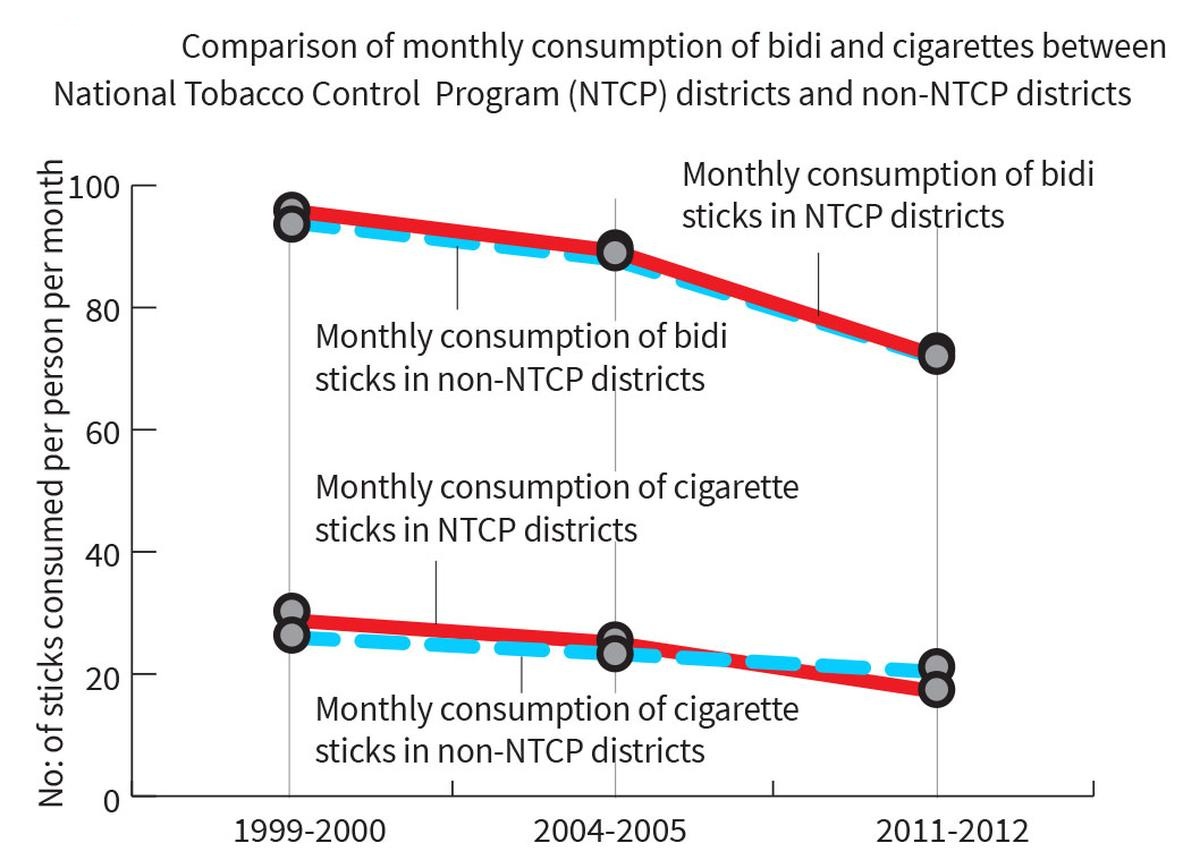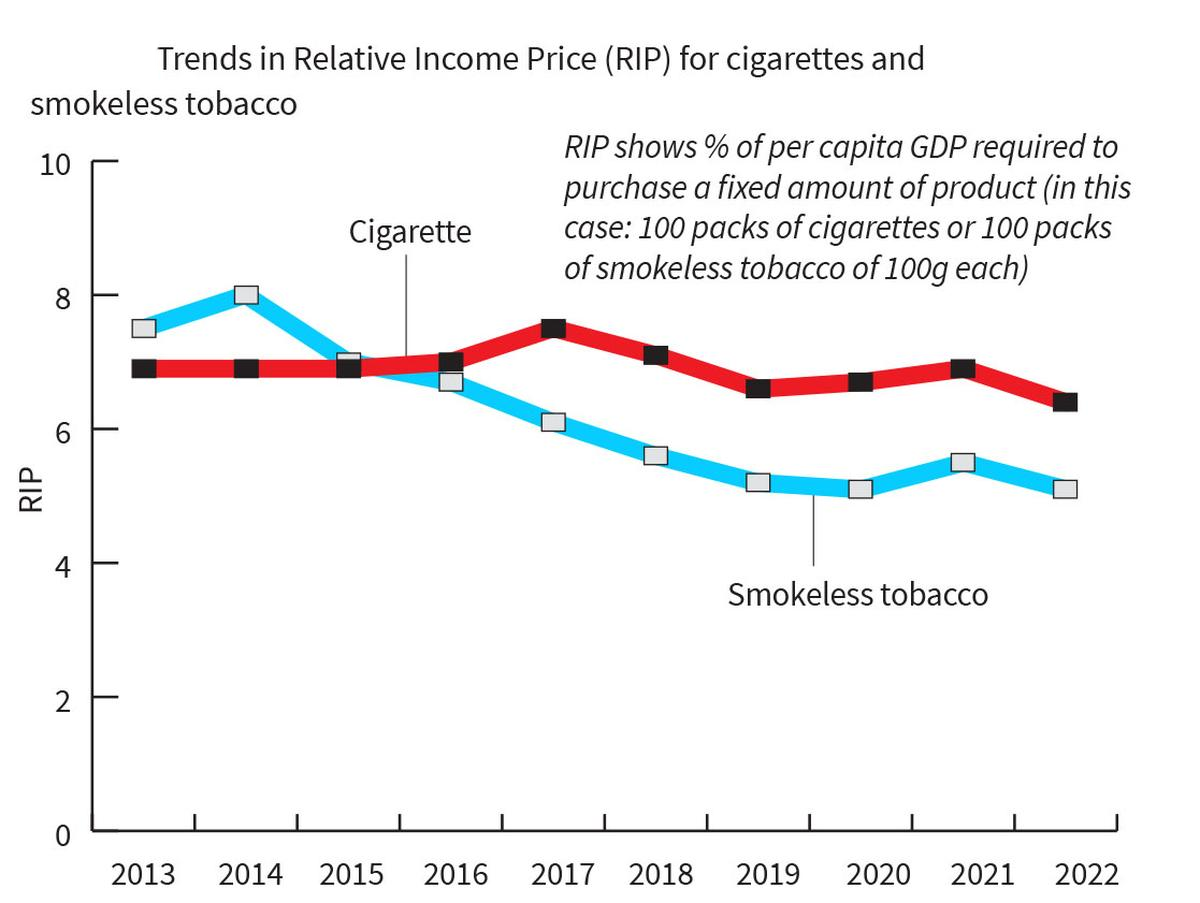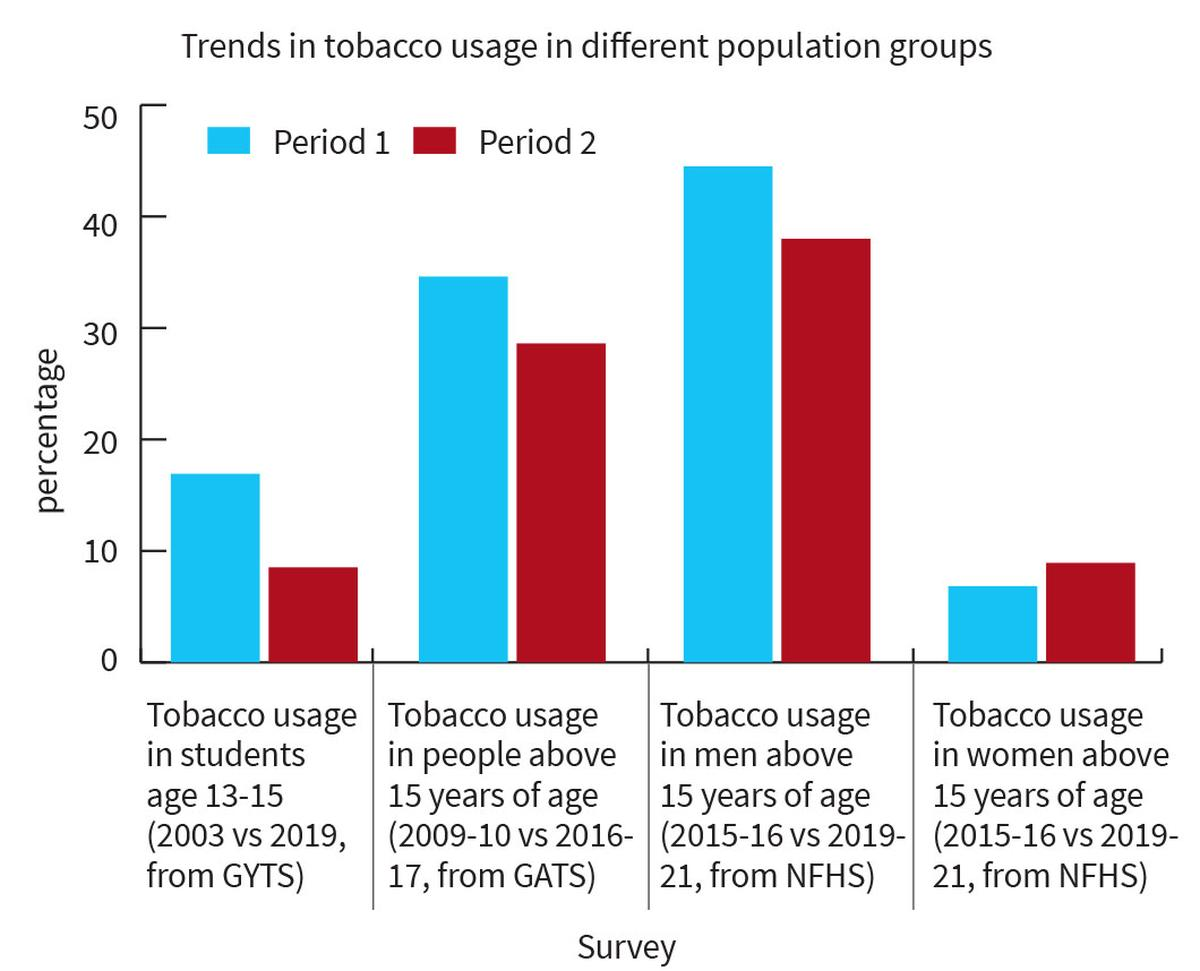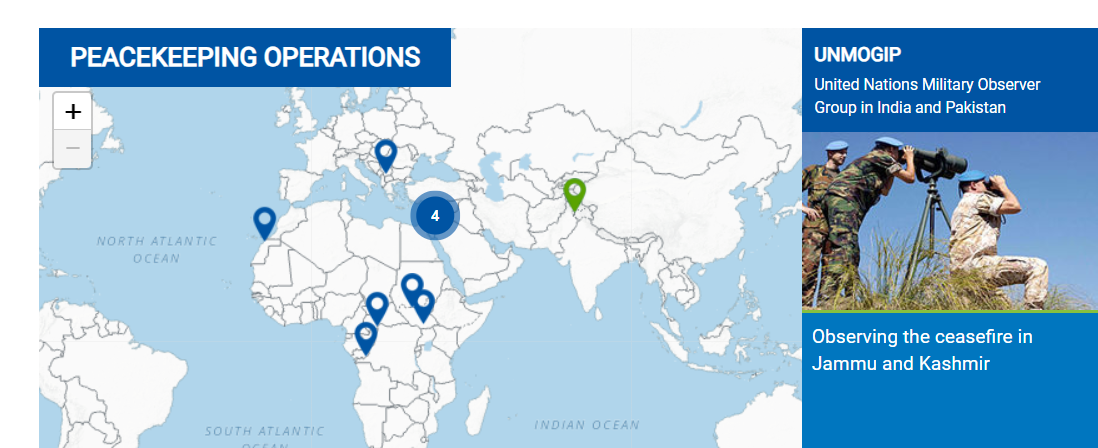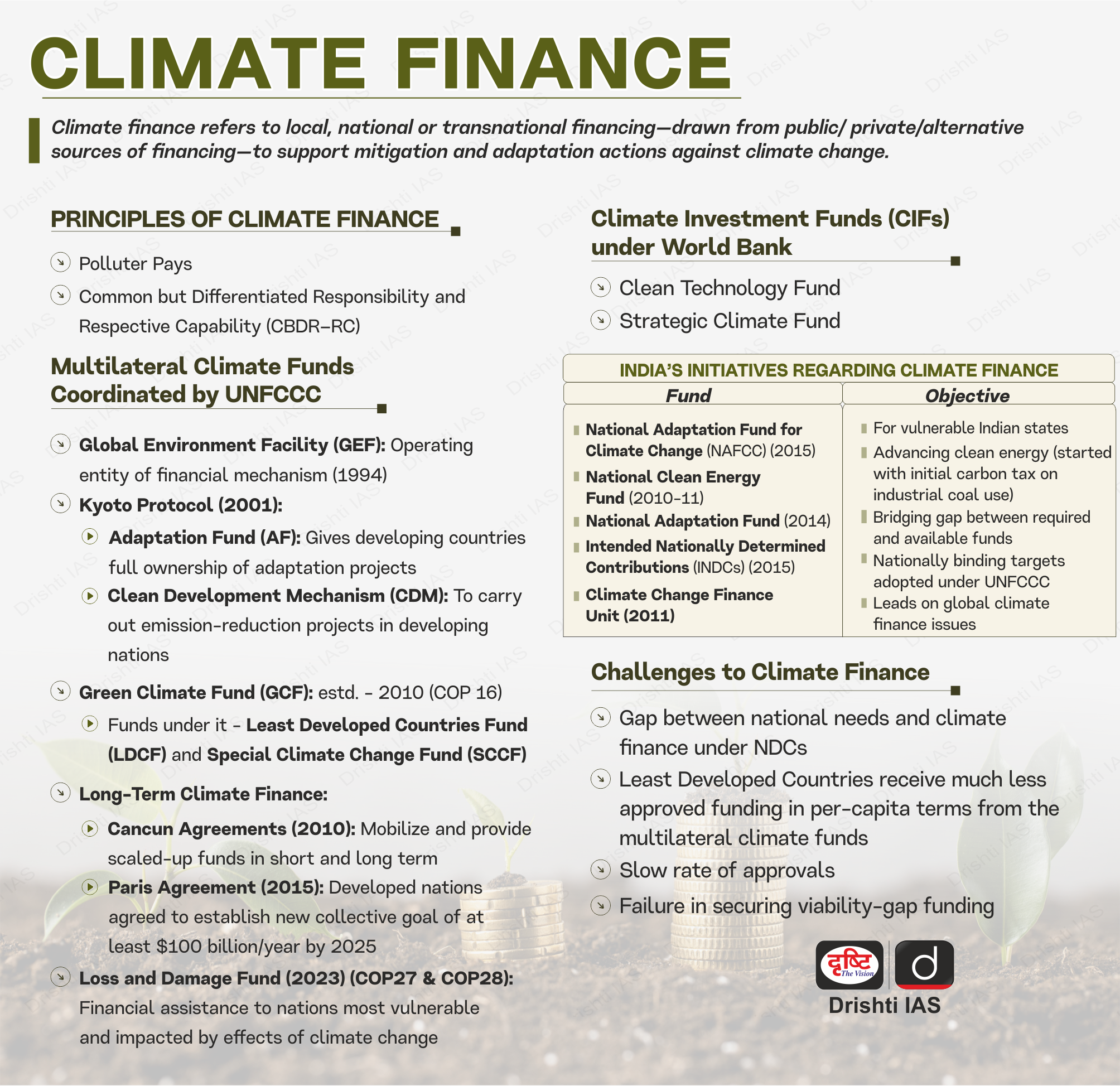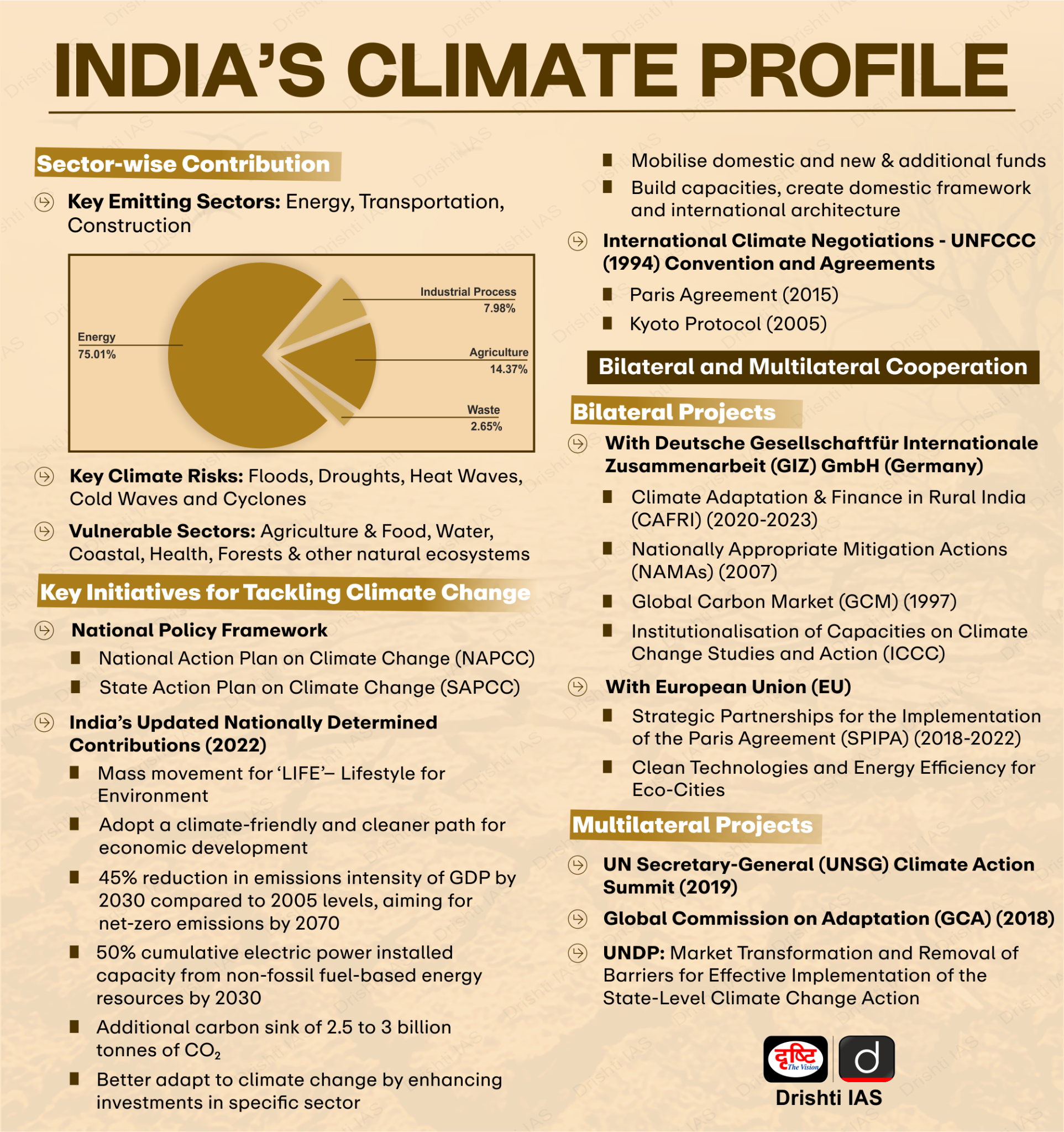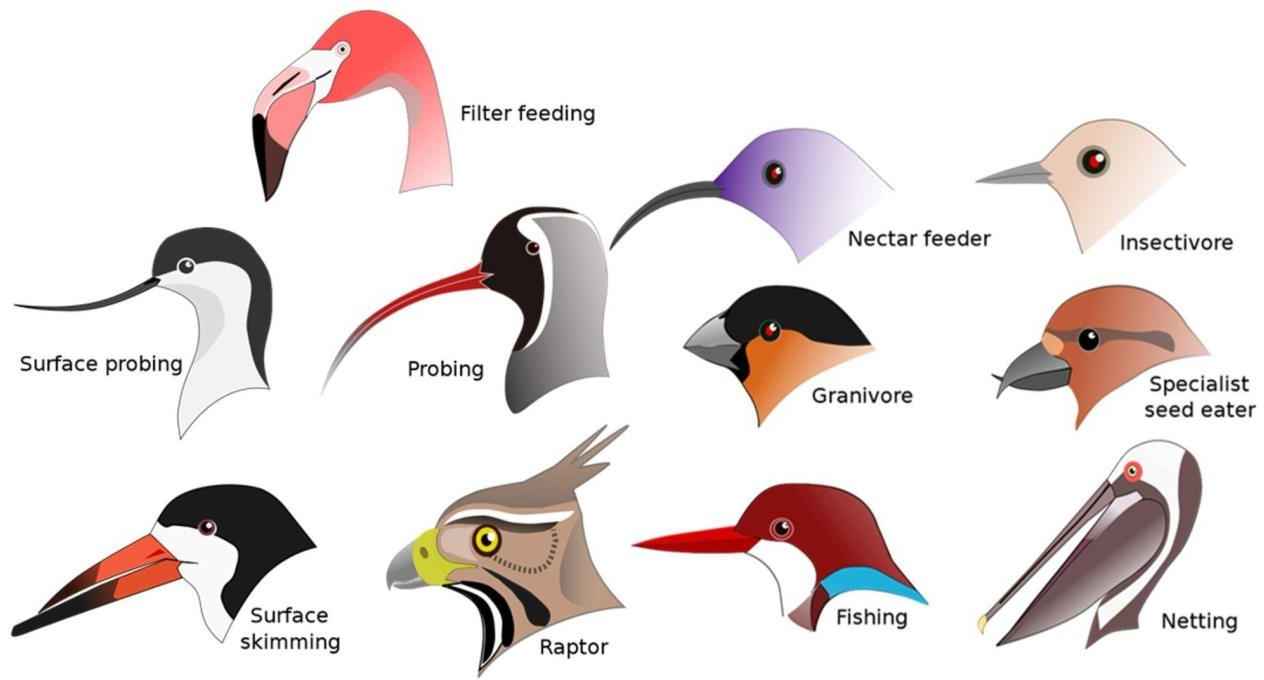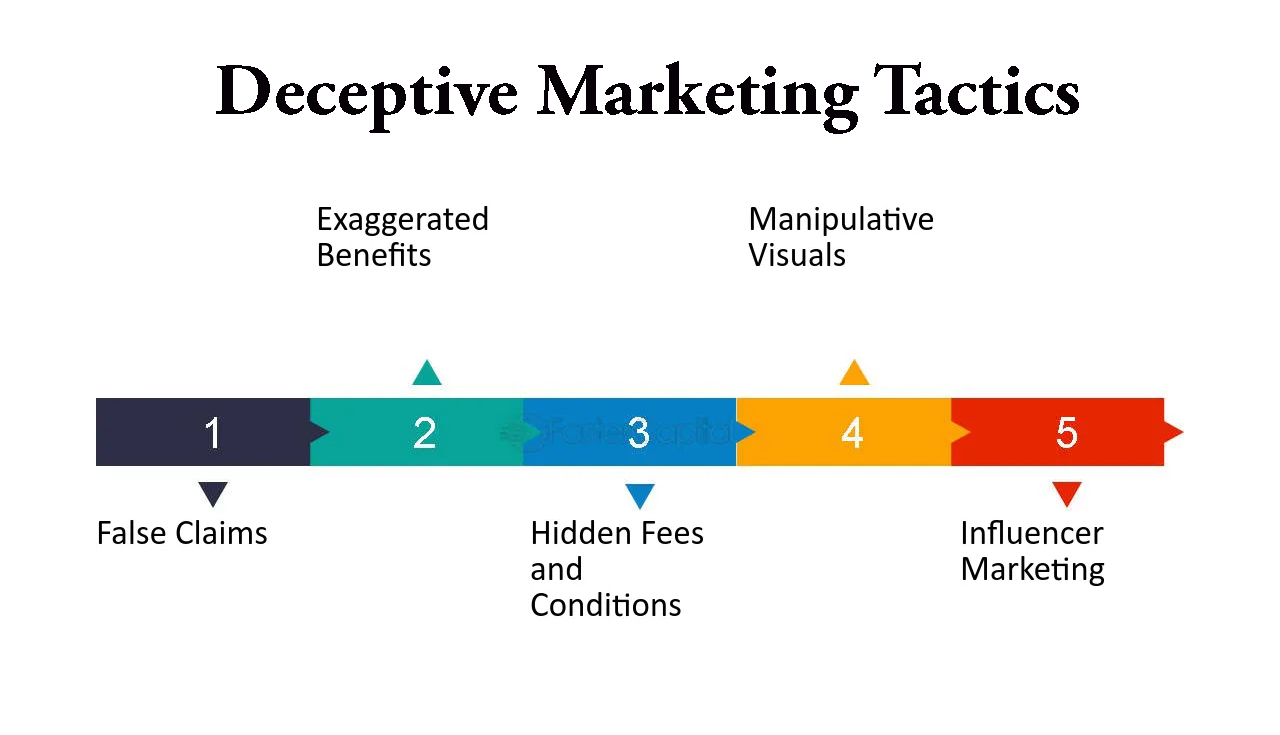Social Issues
Tobacco Epidemic in India
For Prelims: Tobacco Consumption, Global Youth Tobacco Survey, WHO Framework Convention on Tobacco Control (WHO FCTC), Goods and Services Tax (GST), Cigarettes and Other Tobacco Products Act (COTPA), 2003
For Mains: Impact of tobacco and eradication measures, Scenario of tobacco consumption in India, Taxation of tobacco products, Findings of Global Youth Tobacco Survey.
Why in News?
Tobacco is the most widely recognised preventable cause of disease and death in the world.
- India has the world's second-highest (after China) number of tobacco consumers, with nearly 26 crore people.
Key Facts about Tobacco Usage
- Tobacco kills up to half of its users who don’t quit.
- Tobacco kills more than 8 million people each year, including an estimated 1.3 million non-smokers who are exposed to second-hand smoke.
- In India, nearly 1.35 million die every year due to use of tobacco.
- Around 80% of the world's 1.3 billion tobacco users live in low- and middle-income countries.
- In 2020, 22.3% of the world’s population used tobacco
What are the Statistics About Tobacco Consumption in India?
- No Significant Decrease of Bidi or Cigarette Consumption: As per National Family Health Survey (NFHS) there is no significant difference in the reduction of bidi or cigarette consumption between National Tobacco Control Programme (NTCP) and non-NTCP districts.
- Possible reasons for this may be insufficient staffing, resource allocation, and utilisation, and lack of effective monitoring mechanisms.
- Cigarettes and Bidis Have Become More Affordable: In the past 10 years, cigarettes, bidis, and smokeless tobacco products (SLTs) have become cheaper.
- Goods and Services Tax (GST) system has made them even more affordable due to integrated tax system which lowered the prices.
- Tobacco Use Higher Among Womens: Tobacco use has declined in all groups, except for women where use increased by 2.1% between 2015 and 2021.
World No Tobacco Day:
- World No Tobacco Day is observed on 31st May.
- World No Tobacco Day was created in 1987 by the Member States of the World Health Organization to draw global attention to the tobacco epidemic and its consequences.
- The day aims to inform the public about the dangers of using tobacco.
- It also encourages people around the world to claim their right to health and healthy living and to protect future generations.
- Theme for 2024: “Protecting Children from Tobacco Industry Interference”
- The day serves as a reminder of the preventable death and disease caused by tobacco use, and highlights the importance of tobacco control policies and interventions.
Ahilyabai Holkwar:
- 31st May also commemorates the birth anniversary of Queen Ahilyabai Holkar. Ahilyabai Holkwar was born on 31st May 1725, in the village of Chondi, Ahmednagar district, Maharashtra.
- In 1733, she married Khanderao Holkar, the son of Malhar Rao Holkar, the founder of the Holkar dynasty of the Maratha Empire.
- She became the ruler of the Malwa kingdom after her husband's death in 1754.
- She contributed to the construction of many temples, including the famous Kashi Vishwanath Temple in Varanasi.
- She abolished the practice of Sati in her kingdom and promoted education and women's rights.
- Ahilyabai Holkar died on 13th August 1795.
How is India Fighting Against Tobacco?
- International Commitment:
- WHO Framework Convention on Tobacco Control (FCTC):
- India is one of the 182 signatories of this Convention, which signifies its commitment to global tobacco control efforts.
- It aims to reduce tobacco usage worldwide by helping countries develop demand and supply reduction strategies and effective national tobacco control policies.
- World No Tobacco Day:
- 31st May is observed as ‘World No Tobacco Day’ every year to spread awareness around the deadly effects of tobacco consumption.
- WHO Framework Convention on Tobacco Control (FCTC):
- National Legislation:
- Cigarettes and Other Tobacco Products (Prohibition of Advertisement and Regulation of Trade and Commerce, Production, Supply, and Distribution) Act (COTPA) 2003: It governs different aspects of tobacco, such as production and supply, advertising and promotion, distribution and sale, as well as packaging and labeling.
- National Tobacco Control Program (NTCP) 2007: To strengthen COTPA implementation and FCTC compliance. It’s key functions includes
- Public Awareness Campaigns: Mass media campaigns educate the public about the health risks of tobacco use.
- Smoking Cessation Initiatives: Through quitlines, counselling, and behavioural interventions.
- Enforcement Mechanisms: Enforcement of COTPA provisions with the help of designated authorities.
- The Prohibition of Electronic Cigarette Act (PECA), 2019: It has banned e-cigarettes in India.
- National Tobacco Quitline Services (NTQLS):
- mCessation Programme: Initiative for tobacco cessation by mobile technology.
- Launched in 2016 as part of the government’s Digital India initiative.
- Tobacco Taxation:
- India taxes tobacco heavily, with cigarettes at 53% of retail price. Bidis, a cheaper option, are taxed much lower at 16%. Public health experts want higher bidi taxes to discourage use and raise government revenue.
What are Hidden Costs of Tobacco Beyond Health Risks?
- Soil Depletion: Tobacco rapidly depletes soil nutrients, requiring more fertilisers which further harm soil quality.
- Deforestation: Tobacco production contributes to deforestation, requiring significant wood for processing. Up to 5.4 kg of wood is required to process 1 kg of tobacco.
- Waste Generation: Production and consumption of tobacco creates a massive waste burden (1.7 lakh tonnes annually in India).
- Economic Burden: Tobacco use leads to immense healthcare costs (estimated Rs.1.7 lakh crore loss in India, 2017-18) exceeding the national health budget (Rs 48,000 crore).
- Over 6 million people working in the tobacco industry are at risk due to tobacco absorption through the skin, leading to potential health issues.
- Waste Management Cost: Cleaning up tobacco waste is a significant additional cost (estimated Rs.6,367 crore annually in India).
What are Challenges to Effective Tobacco Control in India?
- Non-compliant Products: Smokeless tobacco (like gutkha) and smuggled products avoid COTPA (Cigarettes and Other Tobacco Products Act) regulations, making it harder to control their production, sale, and marketing.
- Weak Fines: Low fines (eg: maximum fine of only Rs. 5,000 for violating packaging restrictions for the first time) for COTPA violations (not updated since 2003) don't act as a strong enough deterrent for violators.
- Surrogate Advertising: Tobacco companies cleverly use advertisements for other products (like elaichi) to indirectly promote their brands, making it difficult to regulate their marketing reach. These advertisements indirectly promote tobacco use.
- The ICC Men’s Cricket World Cup 2023 displayed surrogate advertisements for at least two tobacco brands.
- Stalled Amendments: The Indian government hasn't passed proposed amendments to strengthen COTPA in 2015 and 2020, which could have addressed these gaps.
- Limited Enforcement Capacity: The National Tobacco Control Programme (NTCP) lacks the staff, resources, and proper monitoring systems to fully implement COTPA across the country.
- Effective Lobbying in Tobacco Industry:
- E-cigarettes are banned, but problem persist: Policy (banning e-cigarettes) isn't being fully enforced.
- Tax breaks for Small Tobacco Companies: The government isn't taxing all tobacco products equally, making it cheaper for some people to buy harmful products.
- Conflict of Interest with Government: It raises concerns about government's commitment to tobacco control.
- Central government holds a 7.8% stake in ITC Ltd., India’s largest tobacco company.
Way Forward
- Needs Strong Foundation: India's Cigarettes and Other Tobacco Products Act (COTPA) and National Tobacco Control Programme (NTCP) need to be updated for tobacco control efforts.
- Higher tobacco taxes: Taxes on tobacco products, especially bidis and smokeless tobacco, are well below the recommended WHO target of 75%. Increasing taxes would discourage consumption and generate revenue for public health initiatives.
- Effective Monitoring: Regular monitoring is essential to track trends in tobacco use, identify areas where COTPA is being violated, and assess the effectiveness of anti-tobacco campaigns.
- Supporting Tobacco Farmers: Introduce public programs to help tobacco farmers transition to alternative crops. This would minimise the economic hardship caused by reduced tobacco cultivation.
- Data-Driven Approach: Timely collection of data on tobacco use patterns is crucial to understand how these patterns are changing and to identify new strategies employed by the tobacco industry. This data is vital for formulating effective tobacco control policies.
|
Drishti Mains Question: Discuss the impact of tobacco consumption in India. Also, highlight the challenges faced in regulating tobacco products and the significance of global frameworks. |
UPSC Civil Services Examination, Previous Year Questions (PYQs)
Prelims:
Q. Consider the following: (2012)
- Assessment of land revenue based on nature of the soil and the quality of crops
- Use of mobile cannons in warfare
- Cultivation of tobacco and red chillies
Which of the above was/were introduced into India by the English?
(a) 1 only
(b) 1 and 2
(c) 2 and 3
(d) None
Ans: (d)
Q. Match List-I with List-II and select the correct answer using the code given below the Lists: (2008)
| List-I(Board) | List-II (Headquarters) |
| A. Coffee Board | 1. Bengaluru |
| B Rubber Board | 2. Guntur |
| C Tea Board | 3. Kottayam |
| D Tobacco Board | 4. Kolkata |
Code: A B C D
(a) 2 4 3 1
(b) 1 3 4 2
(c) 2 3 4 1
(d) 1 4 3 2
Ans: (b)
Q. Which of the following are the reasons/factors for exposure to benzene pollution? (2020)
- Automobile exhaust
- Tobacco smoke
- Wood burning
- Using varnished wooden furniture
- Using products made of polyurethane
Select the correct answer using the code given below:
(a) 1, 2 and 3 only
(b) 2 and 4 only
(c) 1, 3 and 4 only
(d) 1, 2, 3, 4 and 5
Ans: (a)
Q2. Which one of the following groups of plants was domesticated in the ‘New World’ and introduced into the ‘Old World’? (2019)
(a) Tobacco, cocoa and rubber
(b) Tobacco, cotton and rubber
(c) Cotton, coffee and sugarcane
(d) Rubber, coffee and wheat
Ans: (a)


International Relations
Dag Hammarskjöld Medal and International Day of UN Peacekeepers
For Prelims: Dag Hammarskjöld Medal, Democratic Republic of Congo, United Nations, International Day of UN Peacekeepers, UN peacekeeping mission
For Mains: Role of UN Peacekeeping in resolving conflicts and promoting peace, India's contributions
Why in News?
Indian peacekeeper Naik Dhananjay Kumar Singh, who served with the United Nations Stabilisation Mission in the Democratic Republic of Congo (MONUSCO), will be posthumously awarded the prestigious Dag Hammarskjold medal for his service and sacrifice.
Note:
- Naik Dhananjay Kumar Singh served under the United Nations (UN) flag as part of MONUSCO. He lost his life in the line of duty, demonstrating unwavering commitment to peacekeeping efforts.
- MONUSCO took over from a previous U.N. peacekeeping mission in the African country in 2010.
- MONUSCO aims to protect civilians, humanitarian personnel and human rights defenders from the imminent threat of physical violence and to support the government of the country in its stabilisation and peace consolidation efforts.
What is the Dag Hammarskjöld Medal?
- The Dag Hammarskjöld medal was established in December 2000 as a posthumous award to members of peacekeeping operations who lost their lives during service with a peacekeeping operation under the operational control and authority of the United Nations.
- It is named after former UN Secretary-General Dag Hammarskjöld, who died in a plane crash while on a peacekeeping mission in 1961.
- Each year on Peacekeeper's Day (29th May), this medal is awarded to any Member State who has lost one or more military or police peacekeepers at a ceremony at headquarters of the UN.
International Day of UN Peacekeepers
- The International Day of UN Peacekeepers was established by the UN General Assembly in 2002, to pay tribute to all men and women serving in peacekeeping, and to honour the memory of those who have lost their lives in the cause of peace.
- 2024 Theme: 'Fit for the future, building better together', emphasises the evolution and adaptability of UN Peacekeeping to address future conflicts.
What is the U.N. Peacekeeping Mission?
- The U.N. Peacekeeping mission is a joint effort between the Department of Peace Operations and the Department of Operational Support and aims to assist host countries to transition from situations of conflict to peace.
- UN Peacekeeping was established during the Cold War when the Security Council was often paralysed by rivalries.
- The first two peacekeeping operations deployed by the UN were the UN Truce Supervision Organization (UNTSO), in 1948 to monitor the Armistice Agreement between Israel and its Arab neighbours and the UN Military Observer Group in India and Pakistan (UNMOGIP), in 1949.
- More than two million peacekeepers from 125 countries have served in 71 operations around the world. Today, about 76,000 women and men are serving in 11 conflict zones across Africa, Asia, Europe, and the Middle East.
- The three main principles guiding the U.N. Peacekeeping missions are Consent of the parties, Impartiality, and the Non-use of force except in self-defence and defence of the mandate.
What is India's Contribution to UN Peacekeeping?
- Contribution: India is the second largest contributor of uniformed personnel to UN Peacekeeping.
- Over 200,000 Indians have served in 49 U.N. Peacekeeping missions since 1948.
- Presently, the Indian Armed Forces are deployed across nine countries in peacekeeping missions. 160 Indian Army soldiers have made the ultimate sacrifice for global peace.
- The Indian Army has established a Centre for UN Peacekeeping (CUNPK) in New Delhi to impart niche training in peacekeeping operations. This Centre trains more than 12,000 troops every year.
- The UN has mandated targets to increase women peacekeepers' participation as part of its gender parity drive to better address local women's concerns in missions.
- India has deployed Female Engagement Teams (FETs) in the Democratic Republic of Congo and Abyei, the second-largest Indian women contingent after Liberia.
- Major Radhika Sen has been selected for the "Military Gender Advocate of the Year 2023" award by the UN Headquarters, showcasing the positive contribution of Indian women in UN peacekeeping initiatives.
- In 2007, India deployed an all-women Formed Police Unit to the UN Operation in Liberia (UNMIL), making it the first country to send an all-women contingent to a UN Peacekeeping mission.
- India's Displeasure with UNMOGIP: Despite its presence in several countries as part of the Peacekeeping missions, India has routinely expressed its displeasure at the UNMOGIP mission headquartered in Srinagar and Islamabad. The UNMOGIP was established in 1949 to supervise the ceasefire between India and Pakistan.
- UNMOGIP has remained in the region to observe hostilities between the neighbouring countries and report ceasefire violations along the Line of Control (LoC).
- India has reiterated that the mission has “outlived its relevance” after the Simla Agreement was signed by India and Pakistan in July 1972 and the establishment of the LoC.
Read more: India's Commitment to UN Peacekeeping, Peacebuilding Through The United Nations
|
Drishti Mains Question: Q. Discuss the evolution and guiding principles of the UN Peacekeeping mission, and highlight India's contribution to global peacekeeping efforts. |
UPSC Civil Services Examination Previous Year Question (PYQ)
Prelims
Q. The Security Council of UN consists of 5 permanent members, and the remaining 10 members are elected by the General Assembly for a term of (2009)
(a) 1 year
(b) 2 years
(c) 3 years
(d) 5 years
Ans: (b)

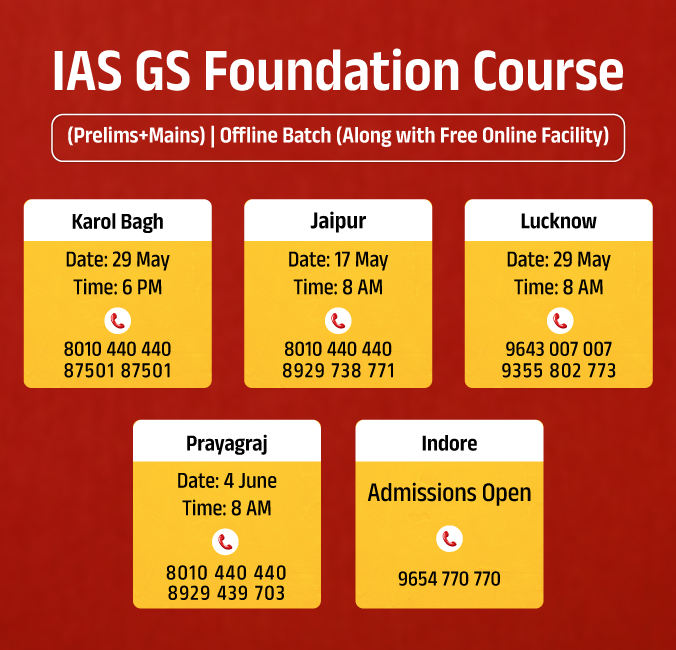
Biodiversity & Environment
Paris Agreement Climate Finance Target for 2022
For Prelims: Organisation for Economic Cooperation and Development, Climate Finance Goal, World Bank, Multilateral Development Banks, New Collective Quantified Goal
For Mains: Climate finance to developing countries, Effectiveness of international climate finance mechanisms, Economic Development and Environmental Sustainability
Why in News?
The Organisation for Economic Cooperation and Development (OECD) released a report stating that developed countries provided and mobilised more than USD 100 billion in climate finance to developing countries in 2022, after failing to do so in previous years.
What are the Key Highlights of the OECD Report?
- Climate Finance Goal: Developed countries provided and mobilised USD 115.9 billion in climate finance to developing countries in 2022. This achievement comes two years later than the original 2020 target year.
- Dominance of Public Climate Finance: Public climate finance from bilateral (countries) and multilateral sources (like the World Bank) accounted for close to 80% of the total financial flow in 2022. Nearly 90% of financing from Multilateral Development Banks (MDBs) was in the form of loans.
- Bilateral sources provided USD 41 billion, while multilateral sources provided USD 50.6 billion. Mobilised private finance accounted for USD 21.9 billion in 2022.
- Nature of Financial Instruments: Loans constituted 70% of public climate finance, raising concerns about debt burdens on developing countries. Grants made up only 28% of the total public climate finance.
- Distribution by Income Level: Lower-income countries received 64% of their public climate finance as grants, whereas lower-middle-income countries received only 13% as grants.
- Funding for Mitigation vs Adaptation: Most of the finance went towards mitigation efforts, with adaptation activities receiving USD 32.4 billion in 2022.
- Expert Concerns and Recommendations: Experts called for more transparent accounting and a clear definition of climate finance.
- Critics argue that the heavy reliance on loans undermines climate justice principles.
- The USD 100 billion target is deemed inadequate compared to the estimated USD 1 trillion needed annually by 2030 for developing nations to effectively combat climate change.
What is the Future of Climate Finance Goal?
- Negotiations are underway to establish a new, more ambitious New Collective Quantified Goal (NCQG) on climate finance. This is expected to be adopted at COP29 summit in Baku, Azerbaijan, in November 2024.
- Under NCQG developed countries must meet from 2025 onward to provide climate finance to developing countries and it will supersede the 2015 Paris Agreement.
- A 2021 report by UN Climate Change estimated that developing countries would need about USD 6 trillion annually until 2030 to implement their climate action plans.
- India has urged developed countries to provide at least USD 1 trillion per year in climate finance to developing countries from 2025 to address global warming.
Organisation for Economic Co-operation and Development
- The OECD is an international organisation of 38 democratic countries committed to the market economy.
- It was established in 1960, by 18 European nations, the United States, and Canada, with headquarters in Paris, France.
- The OECD aims to shape policies that foster prosperity, equality, opportunity, and well-being for all, and publishes economic reports, statistical databases, analyses, and forecasts on global economic growth.
- It also works to eliminate bribery and financial crime worldwide and maintains a "black list" of uncooperative tax havens.
- Additionally, the OECD has working relationships with non-member economies like India, in addition to its member countries.
|
Drishti Mains Question: Q. Discuss the extent to which the world is on track to meet the goals set by the Paris Agreement to contain global warming and mitigate issues arising from climate change. |
Read more: Climate Finance Road to COP29, India’s Climate Profile (Part - II)
UPSC Civil Services Examination Previous Year Question (PYQ)
Prelims:
Q. With reference to the Agreement at the UNFCCC Meeting in Paris in 2015, which of the following statements is/are correct? (2016)
- The Agreement was signed by all the member countries of the UN, and it will go into effect in 2017.
- The Agreement aims to limit the greenhouse gas emissions so that the rise in average global temperature by the end of this century does not exceed 2ºC or even 1.5ºC above pre-industrial levels.
- Developed countries acknowledged their historical responsibility in global warming and committed to donate $ 1000 billion a year from 2020 to help developing countries to cope with climate change.
Select the correct answer using the code given below:
(a) 1 and 3 only
(b) 2 only
(c) 2 and 3 only
(d) 1, 2 and 3
Ans: B
Mains:
Q. Describe the major outcomes of the 26th session of the Conference of the Parties (COP) to the United Nations Framework Convention on Climate Change (UNFCCC). What are the commitments made by India in this conference? (2021)
Q. Explain the purpose of the Green Grid Initiative launched at the World Leaders Summit of the COP26 UN Climate Change Conference in Glasgow in November 2021. When was this idea first floated in the International Solar Alliance (ISA)? (2021)

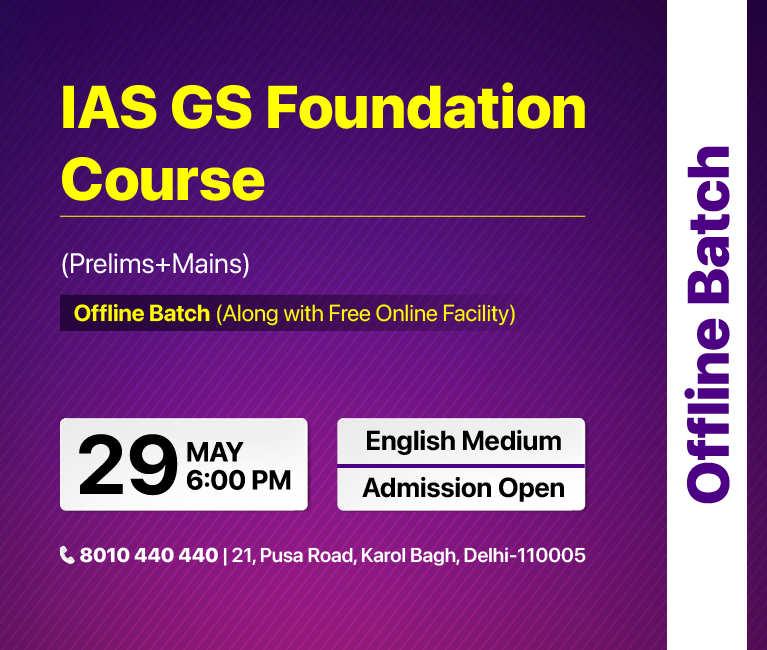
Indian Economy
India in Trade Deficit with Top Trading Partners
For Prelims: Trade deficit, free trade agreement, export-oriented sectors, external debt, inflation, Merchandise Exports from India Scheme (MEIS) , Sagarmala project , Foreign Direct Investment (FDI)
For Mains: Current Status of India’s Trade Deficit, Key Impacts of the Trade Deficit on the Indian Economy, Possible Measures to control the Trade Deficit.
Why in News?
Recent official data shows that India has a trade deficit with 9 out of its top 10 trading partners, including China, Russia, Singapore, and South Korea in 2023-24.
- A trade deficit occurs when the value of a country's imports exceeds the value of its exports, with imports and exports referring both to physical goods and services.
What is the Current Status of India’s Trade Deficit?
- India's total trade deficit in the last fiscal narrowed to USD 238.3 billion as against USD 264.9 billion in FY 2021-22.
- Trade deficit with China, Russia, S Korea, and Hong Kong increased in the last fiscal compared to 2022-23, while the trade gap with the UAE, Saudi Arabia, Russia, Indonesia, and Iraq narrowed.
- China has emerged as India's largest trading partner with $118.4 billion of two-way commerce in 2023-24, surpassing the US.
- However, the US was the top trading partner of India during 2021-22 and 2022-23.
- India had a trade surplus of $36.74 billion with the US in 2023-24, and also with the UK, Belgium, Italy, France, and Bangladesh.
- India has a free trade agreement with four of its top trading partners - Singapore, the UAE, Korea and Indonesia (as part of the Asian bloc).
What are the Reasons Behind India’s Trade Deficit?
- Reliance on Energy Imports:
- India imports more than 85% of its crude oil needs which makes the Indian economy vulnerable to the fluctuations in global oil prices, significantly impacting the trade deficit.
- Dependence on Key Inputs:
- Some Indian industries, like pharmaceuticals, semiconductors etc. heavily rely on imported raw materials and intermediates. This increases the import value and contributes to the deficit.
- For instance, the pharmaceutical sector heavily imports Active Pharmaceutical Ingredients (APIs) from China.
- Lower Exports of Manufactured Goods:
- The volume of exported manufactured goods from India, often falls short of imports due to factors like lower manufacturing capabilities and lower competitiveness in the global market compared to nations like China and the US.
What are the Key Impacts of the Trade Deficit on the Indian Economy?
- Benefits:
- A trade deficit is not essentially bad if a country is importing raw materials or intermediary products as it would boost manufacturing and exports.
- A short term benefit of the trade deficit is that higher imports ensure availability of a wider variety of goods and services to citizens which offer greater choices and further improve living standards.
- The trade deficit also results in currency depreciation resulting in benefits like preference of Indian exports due to more competitive prices.
- In some cases, a trade deficit can encourage domestic businesses to invest in innovation and improve efficiency to compete with imported goods. This can lead to job creation in export-oriented sectors like packaging, shipping, logistics etc.
- Challenges:
- Over-reliance on imports can stifle domestic innovation and production in certain sectors, limiting the availability of domestically produced goods.
- A large trade deficit, particularly in sectors with significant import penetration, can lead to job losses in the industries related to that particular sector.
- For example, the imports of textiles products from Bangladesh, at cheaper rates, have caused some industries to shut off, resulting in job losses.
- A persistent trade deficit can put downward pressure on the rupee's value, potentially weakening the domestic currency. This can make imports even more expensive.
- Lower exports can lead to decreased government revenue from export duties. This can impact the government's ability to fund social programs and infrastructure development.
- To finance a trade deficit, India might need to borrow from foreign sources, increasing external debt and interest payments.
- This further depletes forex reserves, and signals economic instability to investors, leading to reduced foreign investment.
What Measures can be taken to Control the Trade Deficit?
- Trade Agreements: Negotiating and implementing FTAs with key partners can reduce tariffs and other barriers to Indian exports, making them more competitive in foreign markets.
- Example: The India-UAE CEPA aims to reduce tariffs on over 80% of bilateral trade, potentially boosting exports of Indian textiles, pharmaceuticals, and agricultural products.
- Improving Export Infrastructure: Investing in infrastructure development, such as modernising ports, roads, and logistics networks can streamline the export process and reduce transportation costs.
- Import Substitution: The government shall encourage the use of domestic substitutes for imported products through public procurement policies and campaigns promoting locally made goods.
- Example: Promoting the use of domestically produced steel in government infrastructure projects can reduce reliance on imported steel and boost the domestic steel industry.
- Rationalise Imports: Analysing import data can help identify non-essential or luxury goods that could be substituted with domestically produced alternatives.
- Example: The government should discourage the import of certain electronic items through higher tariffs, encouraging consumers to choose domestically produced options.
- Skilling the Workforce: Investing in skill development programs can create a workforce with the expertise needed for modern industries, enhancing domestic production capabilities and reducing reliance on imports.
- Managing Currency and Debt Levels Effectively: The RBI should manage the rupee's exchange rate effectively, aiming for a balance that promotes exports without causing excessive depreciation.
- The government should focus on fiscal consolidation to reduce its debt burden, creating a more stable economic environment for domestic industries to flourish.
Conclusion
It's important to note that there's no one-size-fits-all solution, and the effectiveness of these measures depends on various factors like the specific trade partner, the nature of imports and exports, and the global economic climate. The Indian government needs to carefully assess the situation and implement a combination of these strategies to effectively address the trade deficit and promote sustainable economic growth.
|
Drishti Mains Question: Q. Highlighting India's current trade deficit status with most of its major trading partners, discuss its impacts on the Indian economy. Also,suggest measures to bring down India’s trade deficit. |
UPSC Civil Services Examination, Previous Year Questions (PYQs)
Prelims:
Q. Consider the following countries: (2018)
- Australia
- Canada
- China
- India
- Japan
- USA
Which of the above are among the ‘free-trade partners’ of ASEAN?
(a) 1, 2, 4 and 5
(b) 3, 4, 5 and 6
(c) 1, 3, 4 and 5
(d) 2, 3, 4 and 6
Ans: (c)
Q. Which of the following best describes the term ‘import cover’, sometimes seen in the news? (2016)
(a) It is the ratio of value of imports to the Gross Domestic Product of a country.
(b) It is the total value of imports of a country in a year.
(c) It is the ratio between the value of exports and that of imports between two countries.
(d) It is the number of months of imports that could be paid for by a country’s international reserves.
Ans: (d)
Mains
Q. Normally countries shift from agriculture to industry and then later to services, but India shifted directly from agriculture to services. What are the reasons for the huge growth of services vis-a-vis the industry in the country? Can India become a developed country without a strong industrial base? (2014)


Important Facts For Prelims
Sympatric Speciation
Why in News?
A recent study from the Indian Institute of Technology Bombay (IIT-B) sheds light on the mechanisms of sympatric speciation, challenging the traditional view that new species can evolve only when populations are isolated by geographic barriers (a process called allopatric speciation).
What is Sympatric Speciation?
- Definition: Speciation occurs when a group within a species separates from other members of its species and develops its unique characteristics.
- Sympatric speciation occurs when new species evolve from a single ancestral species while inhabiting the same geographic region.
- Allopatric Speciation: Traditionally, speciation was thought to occur mainly through allopatric speciation, it occurs when a species separates into two isolated groups due to a geographical barrier, leading to different development based on their unique habitat or genetic characteristics.
- Example: When the Grand Canyon formed in Arizona, it separated a population of squirrels and other small mammals, leading to allopatric speciation.
- As a result, two separate squirrel species now inhabit the north and south rims of the canyon.
- In contrast, birds and other species were able to cross the canyon barrier and continue to interbreed without being divided into separate populations.
- Example: When the Grand Canyon formed in Arizona, it separated a population of squirrels and other small mammals, leading to allopatric speciation.
Other Types of Speciation
- Peripatric Speciation: It occurs when small groups break off from a larger group to form a new species, due to physical barriers preventing interbreeding.
- The main difference from allopatric speciation is that in peripatric speciation, one group is much smaller than the other. Unique traits of the smaller group become more common in future generations, distinguishing it from the others.
- Parapatric Speciation: It occurs when a species is spread out over a large geographic area, and individuals only mate with those in their region.
- Different habitats influence the development of different species in parapatric speciation. This can happen when part of an environment is polluted, leading to the formation of unique species that are suited to survive in different environments.
What are the Key Highlights of the Study?
- The study focused on three key factors like disruptive selection (where extreme traits are favoured), sexual selection (mate choice based on specific traits), and genetic architecture (how genes influence traits). Researchers simulated a bird population to understand these processes.
- Disruptive Selection: Individuals with extreme traits have higher fitness than those with intermediate traits due to non-uniform resource distribution in the environment.
- Example: Birds with small beaks were better suited for food resources like nuts, while those with longer beaks were more efficient at utilising flower nectar as food.
- Researchers found the disruptive selection, favouring extreme traits based on environmental resource variations, can create a "divide" within a population without geographic isolation.
- Sexual Selection: Contrary to traditional belief, the study reveals that sexual selection favouring resource-relevant traits (e.g., beak size) drives sympatric speciation, not arbitrary traits like feather colour.
- Arbitrary trait-based sexual selection does not lead to speciation. The study also notes potential lower offspring fitness due to sexual selection.
- Genetic Architecture: The study found that genetic architecture plays a key role in sympatric speciation likelihood. Even with weak disruptive selection, if genetic architecture permits trait changes (e.g., beak size), new species can emerge.


Important Facts For Prelims
Recombinant Proteins Using Monosodium Glutamate
Why in News?
Researchers at the Indian Institute of Science (IISc), Bengaluru have made a significant breakthrough in the mass production of recombinant proteins by utilising Monosodium Glutamate (MSG).
- This advancement is crucial for producing essential substances like vaccine antigens, insulin, and monoclonal antibodies.
What are Recombinant Proteins?
- About:
- Recombinant proteins are proteins engineered in the lab by inserting the gene coding for the protein into bacterial, viral, or mammalian cells.
- Production:
- Typically, these proteins are produced in large bioreactors using the cells of a specific yeast which contains a unique promoter, called the alcohol oxidase (AOX) promoter.
- The AOX promoter can be activated by methanol to produce recombinant proteins in large quantities.
- The process involves inserting the desired gene next to the AOX promoter, feeding the yeast with glycerol or glucose, and then adding methanol to activate protein production.
- Risks with Methanol:
- It is highly flammable and hazardous, requiring stringent safety measures. It can also produce harmful byproducts like hydrogen peroxide, which can induce oxidative stress in yeast cells or damage the recombinant proteins.
- Monosodium Glutamate (MSG) - a Safer Alternative:
- MSG can activate a different promoter in the yeast genome that codes for an enzyme called phosphoenolpyruvate carboxykinase (PEPCK), leading to protein production similar to the methanol-induced process, without the associated risks.
- MSG is safer and more environmentally friendly compared to the traditional methanol-induced process. It can be used in biotech industries to mass-produce valuable proteins, including: milk and egg proteins, baby food supplements, nutraceuticals, and therapeutic molecules.
Methanol
- It is the simplest alcohol (also known as Wood alcohol or Methyl alcohol) with the chemical formula CH3OH. It appears as a colourless, fairly volatile liquid with a faintly sweet pungent odour, and completely mixes with water.
- Methanol is flammable, light, and poisonous, and its consumption can cause blindness.
- Methanol was first isolated by Robert Boyle and is now prepared by the direct combination of carbon monoxide gas and hydrogen in the presence of a catalyst.
- It is commonly used as a laboratory solvent and as a denaturant additive in the manufacturing of ethanol.
- Methanol has various uses, including in polymers, production of hydrocarbons, and as a fuel for internal combustion engines.
UPSC Civil Services Examination, Previous Year Question (PYQ)
Prelims
Q. What is Cas9 protein that is often mentioned in news? (2019)
(a) A molecular scissors used in targeted gene editing
(b) A biosensor used in the accurate detection of pathogens in patients
(c) A gene that makes plants pest-resistant
(d) A herbicidal substance synthesised in genetically modified crops
Ans: (a)


Rapid Fire
Global Unemployment Rate to Marginally Decrease in 2024
The International Labour Organisation (ILO) has revised its global unemployment forecast for 2024, projecting a slight decrease to 4.9% from the previously estimated 5.2%, while highlighting the persistent inequalities in labor markets worldwide.
- The revision is mainly due to lower-than-expected unemployment rates in China, India, and high-income countries reported so far this year.
- The downward trend in unemployment is expected to flatten in 2025, with the rate remaining at 4.9%.
- Despite the overall improvement, inequalities in labor markets persist, with women in low-income countries particularly affected.
- The report highlights that 183 million people are considered unemployed, while the number of those without a job but wanting to work stands at 402 million.
- The ILO is the United Nations agency for promoting social and economic justice through international labour standards.
- It was created in 1919, as part of the Treaty of Versailles that ended World War I and became a specialized agency of the United Nations in 1946.
- Based in Geneva, Switzerland, it has 187 member states(India is a founder member) and operates as a tripartite organization, bringing together governments, employers, and workers' representatives.
- The ILO is also a member of the United Nations Development Group, aiming to achieve the Sustainable Development Goals.
Read more: India Employment Report 2024: ILO


Rapid Fire
Calcutta HC Quashed OBC Quota for Muslims
Recently, the Calcutta High Court struck down orders of the West Bengal government providing reservations to multiple communities, including Muslims, under the OBC category.
- In 2013, the West Bengal Backward Classes (Other than Scheduled Castes and Scheduled Tribes) (Reservation of Vacancies and Posts) Act, 2012, was notified under which 77 communities (including 75 Muslim communities) were included in Schedule I of the Act.
- The division Bench of Calcutta HC found that religion had been the “sole” basis for the West Bengal Backward Classes Commission and the state government to provide reservation, which is prohibited under the Article 16 of the Constitution and via previous court orders.
- The Court specifically cited the landmark judgement of Indra Sawhney vs Union of India (1992) where the Supreme Court established that the identification and designation of OBC communities for reservation purposes cannot be based solely on religious affiliation.
- Similar Religion-based Reservation in Other States:
- Kerala: Provides an 8% Muslim quota within its 30% OBC quota.
- Tamil Nadu and Bihar: Also Include Muslim caste groups in their OBC quota.
- Karnataka: Had a 4% sub-quota for Muslims within the 32% OBC quota.
- Andhra Pradesh: Provides 5% reservations quota to the backward Muslim Community.
Read more: Issue of Reservation for Muslims in Andhra Pradesh


Rapid Fire
ADB's Commitment to India's Development
The Asian Development Bank (ADB) has made a significant commitment of USD 2.6 billion in sovereign lending (important source of financing for countries around the world) to India in 2023, focusing on various development projects and initiatives.
- ADB's portfolio in 2023 aligned its portfolio with India’s priorities, focusing on structural transformation, job creation, infrastructure, green growth (renewable energy), urbanization, industry, power, and climate resilience, and inclusiveness.
- Additional funding was approved to bolster India's national industrial corridor development program, with specific support for the Visakhapatnam-Chennai Industrial Corridor.
- The bank's emphasis on sustainable development aligns with global efforts to achieve the Sustainable Development Goals (SDGs) and eradicate poverty.
- ADB is a multilateral development bank established in 1966 with a mission to foster economic growth and cooperation in the Asia-Pacific Region.
- It is headquartered in Manila, Philippines, and has 68 members. It is governed by a board of governors and funded through member contributions, retained earnings from lending, and loan repayments.
Read more: India, Asian Development Bank Ink Deal for Uttarakhand, Asian Development Bank (ADB) Loan to Himachal Pradesh
Rapid Fire
Deceptive Practices in the FMCG Industry
Fast Moving Consumer Goods (FMCG) are everyday items like snacks and toiletries sold often. FMCG companies employ various deceptive tactics to increase sales and maintain profits, often at the expense of the consumers. These include:
- Shrinkflation: It is the practice of reducing the size or quantity of a product without lowering the price, often during periods of inflation, making it less noticeable to consumers.
- Skimpflation: It is the practice of using lower-quality raw materials or reducing services while keeping the price constant.
- Deceptive Packaging: It is the practice of under-filling containers while keeping prices the same.
- Misleading Pricing Strategies: Artificially inflate prices before offering discounts and sell slightly modified versions of popular products as premium items.
- While these tricks are not illegal, they deceive consumers, and it's essential to ensure that the Consumer Protection Act, 2019, and other regulations, which mandate clear labelling of raw materials and weights, are strictly followed.
Read More: Shrinkflation, Curtailing Misleading Food Ads



